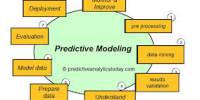Material Requirements Planning (MRP) is the process of converting master schedule needs for completed items into time-phased requirements for raw materials, components, parts, and sub-assemblies. Although most MRP systems are software-based, MRP may also be done by hand. Material needs planning systems are used by businesses to predict raw material amounts and schedule delivery.
An MRP system is intended to simultaneously meet three objectives:
- Ensure that raw materials and goods are available for manufacturing and delivery to consumers.
- Maintain the lowest possible material and product levels in store
- Plan manufacturing activities, delivery schedules and purchasing activities.
MRP is specifically developed to increase a company’s inventory efficiency by predicting raw material amounts and arranging timely delivery. Material needs planning generates a production plan that defines the timing and amounts of all materials necessary to manufacture those end products, while the master schedule specifies the quantity and need dates of the end items.
MRP develops inventory needs for components and raw materials by working backwards from a production plan for final items. Reorder point (ROP)/reorder-quantity (ROQ) type systems like EOQ (economic order quantity) were utilized in production and inventory management prior to MRP and before computers dominated industry. Furthermore, by regulating production, purchasing, and delivery processes, the material requirements planning system (MRP) assists organizations in maintaining low inventory levels.
The MRP process has several advantages, including ensuring that materials and components will be accessible when needed, reducing inventory levels, shortening customer lead times, improving inventory management, and improving overall customer satisfaction. MRP ensures that the correct inventory is accessible for the manufacturing process at the lowest feasible cost and at the exact time it is required.

The MRP process has several drawbacks, including a large reliance on input data correctness (garbage in, garbage out), a high implementation cost, and a lack of flexibility in the production schedule. As a result, MRP enhances manufacturing operations’ efficiency, flexibility, and profitability. It has the potential to increase production worker productivity, enhance product quality, and reduce material and labor costs.
The History of Material Requirements Planning –
- The MRP inventory system’s deployment and continuous innovation had a long-term impact that may still be observed today.
- Inventory was recorded by hand until computer-engineered systems became common in the commercial sector.
- Users grew aware of how inefficient hand-kept inventory was as time went on, creating a market demand for the most productive way.
- In the early 1950s, MRP was first computerized by aero-engine makers associated with General Electric and Rolls Royce.
- Before MRP became commercialized, it was reinvented to use the Polaris program.
- In 1964, MRP was released to specific individual businesses, being used first by Black & Decker.
- By 1975, over 700 companies had implemented MRP as their inventory management system.
- The MRP system has been regularly improved since 1975 in order to make it more effective for enterprises. Including a variety of models.
- MRP is now one of the most extensively utilized inventory management systems in the planet.
MRP starts with a completed products production plan, which is translated into a list of needs for the subassemblies, component components, and raw materials required to manufacture the final product on time. In other words, it’s a technique for determining the resources and objects required to make a specific product. MRP assists manufacturers in determining inventory needs while balancing supply and demand.
The bill of materials (BOM) establishes the link between the final product (demand) and the components (dependent demand). The information provided in the BOM is used as input by MRP. The necessity for manual materials planning is reduced with effective materials needs planning, and the system is able to successfully carry out an efficient approach.
A variety of data is necessary to properly run an MRP inventory system in a company. This technology parses raw data such as bills of lading and the shelf life of stored commodities to offer managers with useful information about their labor and supply needs, which may help organizations improve their production efficiency. Inventory control, bill of material processing, and basic scheduling are all core operations of an MRP system.
MRP also aids firms in keeping inventory levels low. It’s used to schedule manufacturing, buying, and delivery. MRP is widely employed by manufacturers and has unquestionably been a crucial facilitator in the expansion and widespread availability of inexpensive consumer products, raising the standard of life in most nations. Companies must manage the types and amounts of materials they buy, plan which items will be produced and in what quantities, and guarantee that they can fulfill current and future client demand while keeping costs reasonable.
When contemplating implementing an MRP inventory system within a company, it’s critical to understand the benefits and drawbacks of doing so. MRP may be used to track things acquired from outside vendors as well as sub-assemblies made in-house that are parts of larger, more complicated items. MRP has become a critical component in helping firms to keep up with ever-increasing demand while also improving overall production processes.
Individual manufacturers would not have been able to scale up operations as quickly as they did in the half-century since MRP software began if there had not been a means to automate the intricate calculations and data management of MRP processes. It allows a corporation to determine the kind and amount of a certain product, estimate inventories, plan manufacture, and guarantee that completed items arrive at the correct location at the right time and at the lowest feasible cost to fulfill market demand.
Information Sources:
















